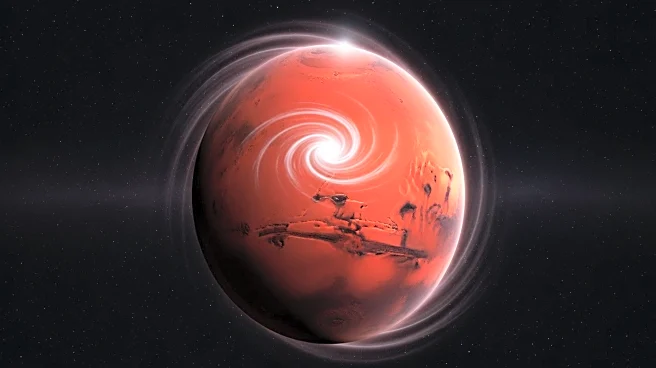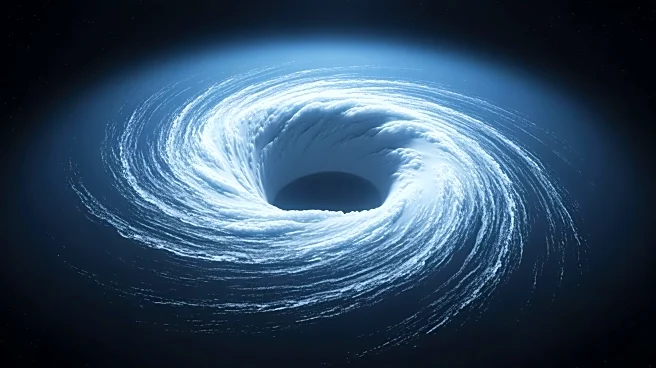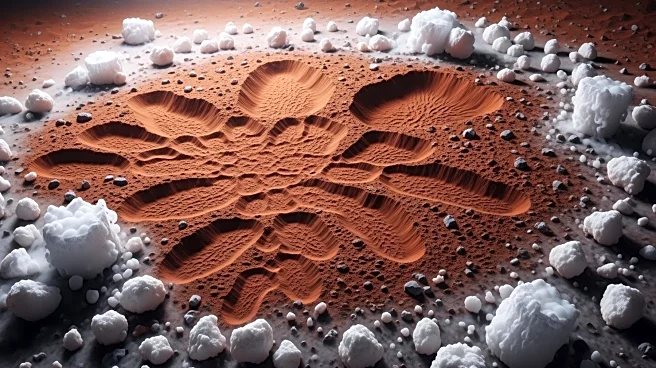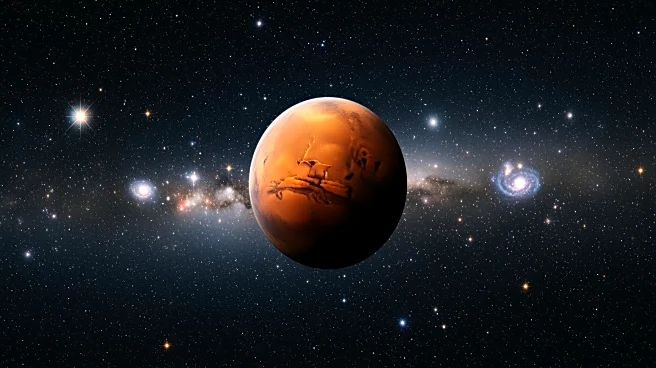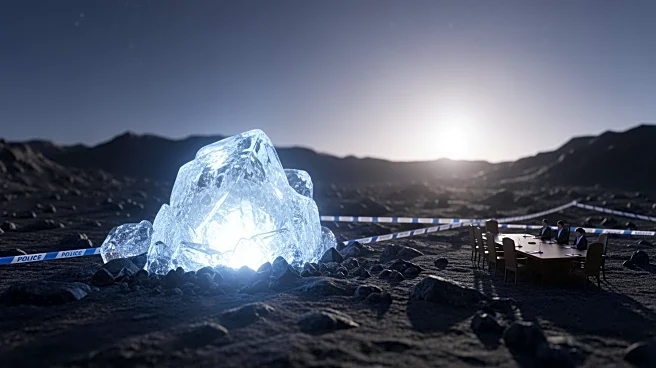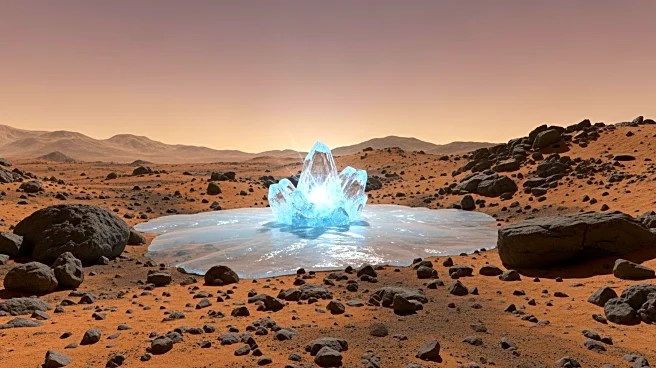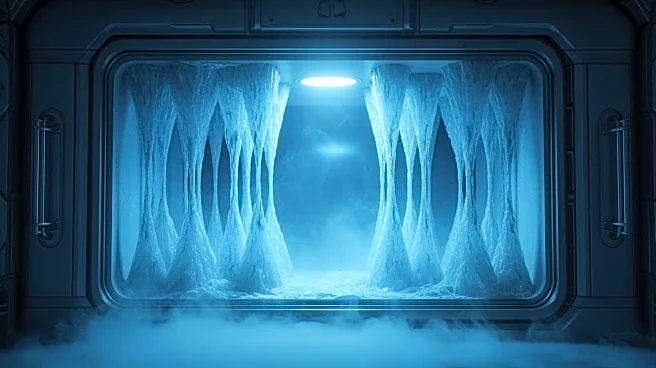What's Happening?
Researchers have observed significant ozone accumulation within Mars' polar vortex, a phenomenon occurring during the planet's harsh winter conditions. The vortex, characterized by extreme cold temperatures,
causes water vapor in the atmosphere to freeze, halting reactions that typically break down ozone. This leads to a sharp increase in ozone levels, providing insights into the atmospheric chemistry and historical climate of Mars. The findings were presented by Dr. Kevin Olsen from the University of Oxford at the EPSC-DPS2025 Joint Meeting in Helsinki.
Why It's Important?
Understanding the ozone dynamics within Mars' polar vortex is crucial for assessing the planet's past habitability and potential for ancient life. If Mars once had an ozone layer similar to Earth's, it could have provided protection from ultraviolet radiation, making the surface more hospitable to life. These insights are vital for future missions, such as the European Space Agency's ExoMars Rosalind Franklin rover, which aims to search for traces of ancient life on Mars.
What's Next?
The ExoMars Trace Gas Orbiter continues to study Mars' atmosphere, with the Atmospheric Chemistry Suite providing data on molecular presence and atmospheric conditions. Future observations will focus on the polar vortex's behavior and its impact on ozone levels. The upcoming ExoMars Rosalind Franklin rover mission, scheduled for 2028, will further investigate the potential for ancient life on Mars, guided by these atmospheric findings.
Beyond the Headlines
The study of Mars' polar vortex and ozone levels offers broader implications for understanding planetary atmospheres and climate systems. It highlights the importance of atmospheric chemistry in assessing habitability and the potential for life beyond Earth, contributing to the ongoing exploration of Mars and other celestial bodies.
